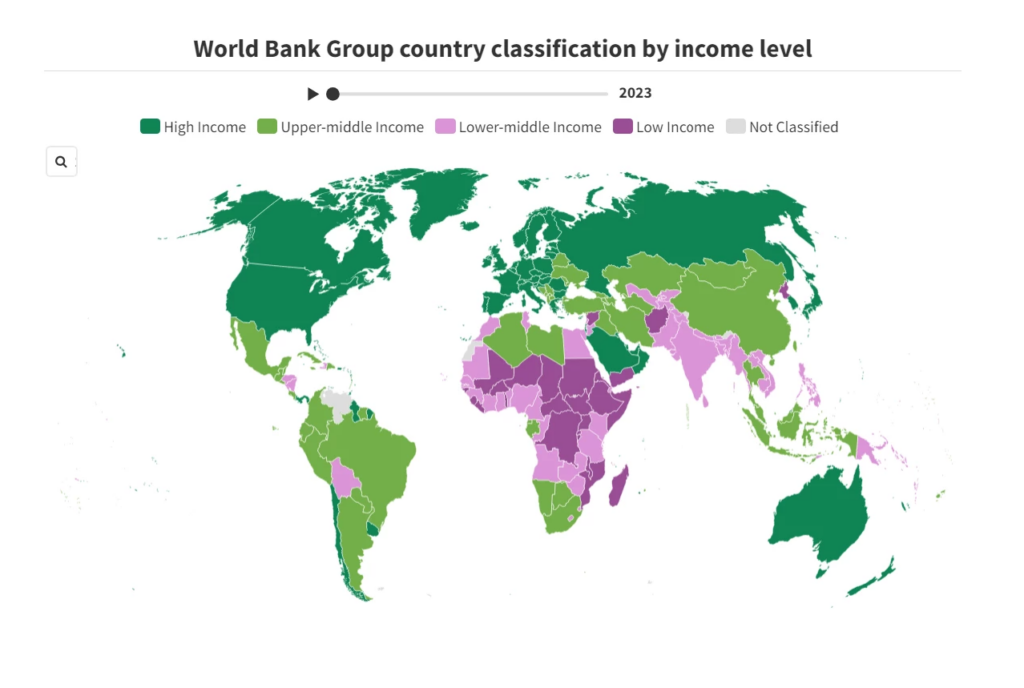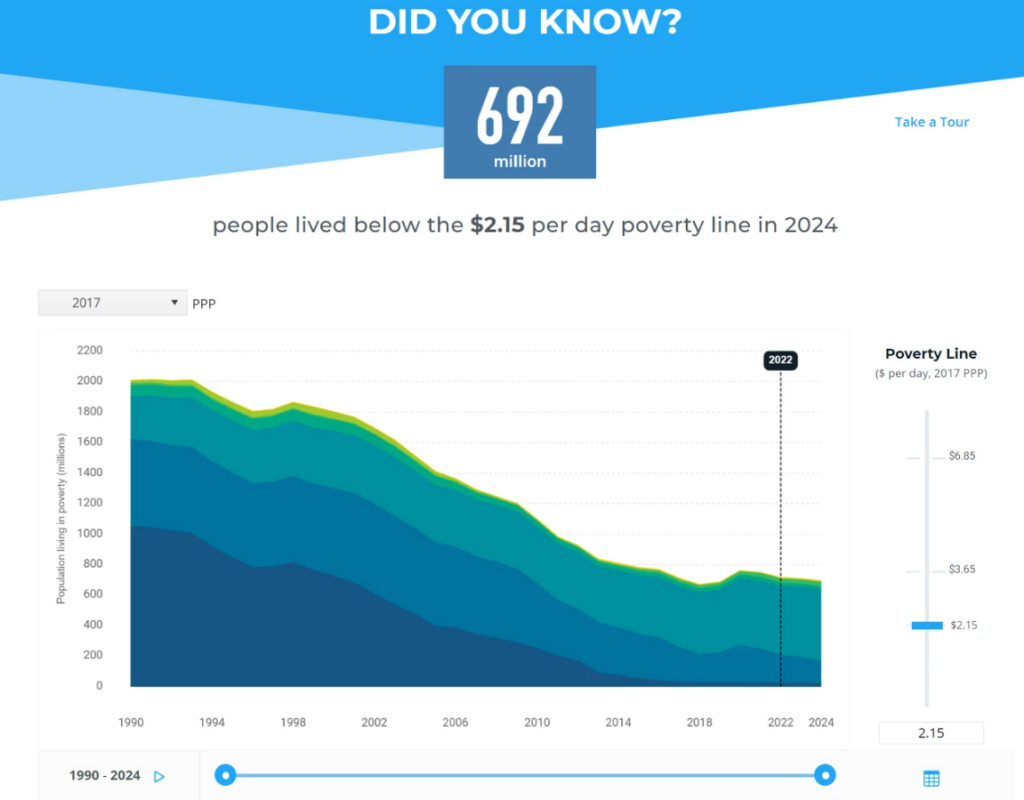
The global economy is interconnected, and understanding the financial challenges faced by the world’s poorest nations is crucial for traders looking to navigate today’s markets.
The World Bank’s 2024 report highlights the 26 poorest countries, outlining the severe economic hardships they face and how these struggles impact global trading. From high debt levels to natural disasters and conflicts, these nations are vulnerable to multiple risks that shape global market trends.
This article delves into these countries’ economic challenges, their global significance, and why they matter to traders.
The 26 poorest countries, as identified by the World Bank, are classified as low-income economies with a gross national income (GNI) per capita of USD 1,135 or less. These nations are home to some of the world’s most vulnerable populations and face severe financial difficulties. They rely heavily on International Development Association (IDA) funding, a critical financial lifeline that helps sustain their economies.
These countries, many of which are located in sub-Saharan Africa and South Asia, face persistent poverty, political instability, and are largely dependent on commodities exports such as agriculture, metals, and oil. Their reliance on commodities makes them highly susceptible to global market fluctuations, and the lack of economic diversification only amplifies the effects of price volatility.
Furthermore, these countries are more affected by economic shocks than the rest of the world, especially as they struggle to recover from the impacts of the COVID-19 pandemic. While most countries have resumed growth, these low-income nations have continued to fall behind, further deepening the gap between them and wealthier economies.

The economic challenges faced by these countries are multifaceted and deeply entrenched. Three major issues dominate their economic landscape: debt, natural disasters, and political instability.
1. Debt: The average debt-to-GDP ratio for these countries stands at 72%, the highest level in 18 years. Many of these nations are either in debt distress or at high risk of it. Their dependence on IDA grants and low-interest loans has become critical, as market financing options have largely dried up. This level of indebtedness constrains their ability to invest in infrastructure and development, limiting economic growth and perpetuating cycles of poverty.
2. Natural disasters: Natural disasters pose a significant threat to these economies, causing annual GDP losses of approximately 2%, which is five times higher than the average in lower-middle-income countries. These countries are particularly vulnerable to climate change, and their limited financial capacity hampers efforts to build disaster resilience. This repeated damage to infrastructure and agriculture places additional strain on their already struggling economies.
3. Conflict and fragility: Two-thirds of the 26 poorest countries are either in active conflict or face institutional fragility, which discourages foreign investment and economic development. The inability to maintain order and stability means that many potential investors are deterred by the risks associated with political instability and armed conflict. This fragility also stifles efforts to improve governance, further limiting their chances for sustainable growth.

The International Development Association, a branch of the World Bank, provides grants and low-interest loans to support low-income countries.
Over the past five years, the IDA has focused on the 26 poorest nations, raising a record USD 93 billion in 2021 and aiming for USD 100 billion by 2024.
This aid helps stabilise economies facing challenges such as debt, political instability, and natural disasters. However, it also highlights the need for long-term solutions to reduce their reliance on international aid.
For traders, understanding the economic struggles of these nations is not just about global awareness—it’s essential for risk management. The interconnectedness of the global economy means that the challenges faced by these countries can have ripple effects in global commodity markets.
Many of the 26 poorest countries are key exporters of commodities such as oil, metals, and agricultural products. When political instability, debt crises, or natural disasters disrupt production, it can lead to price fluctuations in the global markets. For example, a conflict in a major oil-producing low-income country can tighten global oil supplies, causing prices to spike. Similarly, droughts or floods in agricultural nations can lead to significant disruptions in the supply of key commodities, affecting global prices and trade volumes.
Traders, especially those involved in commodity trading, need to stay informed about the political and economic developments in these countries to manage their portfolios effectively. By doing so, they can anticipate market movements and make more informed decisions when trading affected commodities.

The World Bank report provides several recommendations for helping these nations overcome their economic challenges. While external support, such as IDA funding, remains critical, these countries must also implement internal reforms to improve their economic prospects.
1. Tax reforms: Simplifying taxpayer registration and improving tax administration are essential steps for these nations to increase revenue. This would create additional fiscal space for governments to invest in infrastructure, education, and healthcare, all of which are critical for long-term economic development.
2. Public spending efficiency: Improving the efficiency of public spending is another crucial reform. By allocating resources more effectively, these countries can make better use of their limited funds, particularly in areas such as disaster resilience, infrastructure, and social services.
3. Economic diversification: Reducing reliance on commodity exports is necessary for building more resilient economies. By investing in other sectors such as manufacturing, services, and technology, these countries can create new avenues for growth and reduce their exposure to global commodity price volatility.
The economic struggles of the world’s poorest countries are not isolated issues—they are deeply connected to the global economy and have significant implications for traders. For those looking to manage risk in commodity markets, staying informed about the economic health of these countries is essential.
Ready to explore new trading opportunities and stay ahead of global market trends? Open a live account with VT Markets today and access expert insights, cutting-edge tools, and a world of trading opportunities that allow you to make informed decisions in a complex global economy.